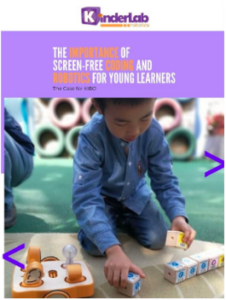District Administration: Career and Technical Education – Why Robotics Should Lead the Way
In this article, our director of curriculum, training and product management discusses the importance of incorporating STEM and STEAM as part of career and technical education (CTE) as well as starting CTE instruction earlier than high school and even middle school. CTE and STEM are a natural pairing!
The article reads in part:
“STEM education outcomes will be even better if CTE is a K12 proposition. Why should schools introduce CTE at such an early stage? Research shows that children begin forming career aspirations as young as preschool, and early exposure to STEM education significantly impacts their confidence, interest and long-term participation in these fields.
By strategically aligning STEM with CTE, districts can not only support the development of future-ready students but also leverage federal funding to strengthen hands-on, engaging learning experiences that build skills they’ll use for the rest of their lives.
One of the greatest misconceptions about CTE is that it is solely about job training. It’s really about skill-building: developing the critical thinking, teamwork skills and adaptability needed in any career. Introducing CTE concepts in elementary school allows students to develop these essential skills early in an organic, engaging way.
Educational robotics programs such as the KIBO Robot Kit from KinderLab Robotics allow elementary students to engage in computer science, engineering and other STEM topics using what Papert called “objects to think with.” Robots move and act within the physical environment of the classroom, providing concrete reinforcement to students’ learning.
Here’s how robotics helps young learners develop these skills.
- Applied knowledge: Early robotics and STEM programs empower students to develop critical thinking and problem-solving skills by engaging in hands-on projects that require iteration, debugging, and creative solutions.
- Effective relationships: Through collaborative robotics challenges, students strengthen communication and teamwork. They learn how to listen, share ideas and build on each other’s contributions.
- Workplace skills: Young learners build technology use skills through programming and engineering design challenges, while also practicing initiative, self-direction and resilience—essential traits for any future career.
Early childhood educators are already adept at teaching their young students to develop these cognitive, social-emotional and executive functioning skills. By framing these child development skills as competencies that support successful CTE, districts can align their K5 STEM programs with workforce development goals.
Early STEM is not separate from CTE—it is CTE.”
Read the full article.



















